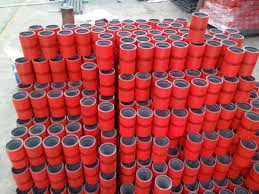- Afrikaans
- Albanian
- Amharic
- Arabic
- Armenian
- Azerbaijani
- Basque
- Belarusian
- Bengali
- Bosnian
- Bulgarian
- Catalan
- Cebuano
- Corsican
- Croatian
- Czech
- Danish
- Dutch
- English
- Esperanto
- Estonian
- Finnish
- French
- Frisian
- Galician
- Georgian
- German
- Greek
- Gujarati
- Haitian Creole
- hausa
- hawaiian
- Hebrew
- Hindi
- Miao
- Hungarian
- Icelandic
- igbo
- Indonesian
- irish
- Italian
- Japanese
- Javanese
- Kannada
- kazakh
- Khmer
- Rwandese
- Korean
- Kurdish
- Kyrgyz
- Lao
- Latin
- Latvian
- Lithuanian
- Luxembourgish
- Macedonian
- Malgashi
- Malay
- Malayalam
- Maltese
- Maori
- Marathi
- Mongolian
- Myanmar
- Nepali
- Norwegian
- Norwegian
- Occitan
- Pashto
- Persian
- Polish
- Portuguese
- Punjabi
- Romanian
- Russian
- Samoan
- Scottish Gaelic
- Serbian
- Sesotho
- Shona
- Sindhi
- Sinhala
- Slovak
- Slovenian
- Somali
- Spanish
- Sundanese
- Swahili
- Swedish
- Tagalog
- Tajik
- Tamil
- Tatar
- Telugu
- Thai
- Turkish
- Turkmen
- Ukrainian
- Urdu
- Uighur
- Uzbek
- Vietnamese
- Welsh
- Bantu
- Yiddish
- Yoruba
- Zulu
Optimal Placement of Nipple Tubing for Efficient Liquid Transfer and Flow Management
Understanding Seating Nipple Tubing A Key Component in Oil and Gas Production
In the oil and gas industry, the importance of proper equipment cannot be overstated. Among the various components of drilling and production operations, seating nipple tubing plays a crucial role. This article explores the purpose, function, and significance of seating nipple tubing in the extraction of hydrocarbons.
What is Seating Nipple Tubing?
Seating nipple tubing is a specialized type of tubing used in well completions and interventions, specifically designed to create a reliable and effective seal between various components. It is typically installed in the wellbore as part of the completion string and is integral to establishing a secure connection for downhole tools and equipment. The seating nipple provides a landing zone for tools such as plugs and packers, ensuring that these components can be deployed or retrieved efficiently.
The Function of Seating Nipple Tubing
The primary function of seating nipple tubing is to facilitate the effective placement and removal of downhole tools. When a well is being completed, various tools must be deployed at specific depths to control pressure, isolate sections of the reservoir, or optimize production flow. The seating nipple acts as a standardized connector that allows these tools to lock into place, maintaining a reliable seal to prevent any fluid leakage.
Moreover, seating nipples are designed to withstand high pressures and temperatures encountered in downhole environments, ensuring that they can perform securely even under extreme conditions. They are typically made from high-grade materials that are resistant to corrosion and erosion, which is essential for long-term durability and reliability.
Types of Seating Nipples
There are several types of seating nipples, each designed for specific applications or operational requirements within the oil and gas industry. Some common types include
seating nipple tubing

2. Locking Seating Nipple Designed with a mechanism to lock the tool in place, preventing unintended movement during operations.
3. Retrievable Seating Nipple Allows for the easy retrieval of the tool after it has served its purpose, providing flexibility during the intervention process.
Each type of seating nipple has its unique specifications, advantages, and applications, which can vary based on the well conditions and operational requirements.
Importance in Well Completion
The role of seating nipple tubing in well completion processes is critical. During the completion phase, operators must ensure that they can deploy and retrieve various tools without compromising the integrity of the well. A reliable seating nipple facilitates this process, thereby enhancing efficiency and reducing the risk of equipment failure.
Furthermore, proper installation and use of seating nipples can lead to improved production rates. By effectively isolating zones within the reservoir, operators can optimize hydrocarbon flow, which ultimately contributes to the overall productivity and profitability of the well.
Conclusion
In conclusion, seating nipple tubing is an essential element in the oil and gas industry, serving as a cornerstone in the successful completion and operation of wells. Its ability to provide secure connections for downhole tools while withstanding harsh conditions makes it a vital component in the quest for hydrocarbon extraction. Understanding the functionality and significance of seating nipple tubing is crucial for professionals in the industry, as it directly impacts the efficiency, safety, and success of drilling operations. As technology continues to evolve, the design and application of seating nipples may also advance, but their foundational role in well operations will remain indispensable.
With the ongoing challenges of extracting resources efficiently and safely, investing in high-quality seating nipple tubing will continue to be a priority for oil and gas operators aiming to optimize production and reduce operational risks.
-
Tubing Pup Joints: Essential Components for Oil and Gas OperationsNewsJul.10,2025
-
Pup Joints: Essential Components for Reliable Drilling OperationsNewsJul.10,2025
-
Pipe Couplings: Connecting Your World EfficientlyNewsJul.10,2025
-
Mastering Oilfield Operations with Quality Tubing and CasingNewsJul.10,2025
-
High-Quality Casing Couplings for Every NeedNewsJul.10,2025
-
Boost Your Drilling Efficiency with Premium Crossover Tools & Seating NipplesNewsJul.10,2025







